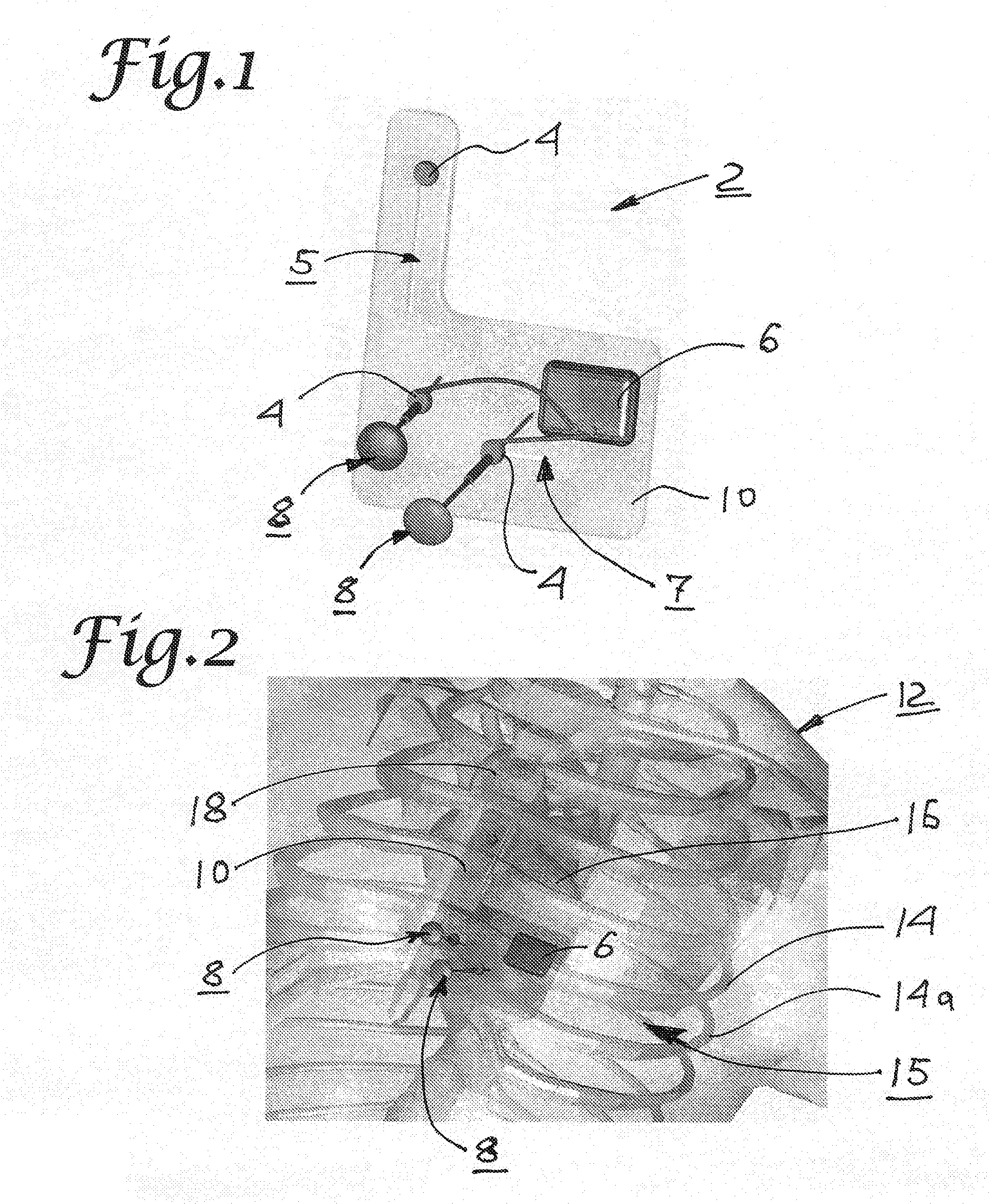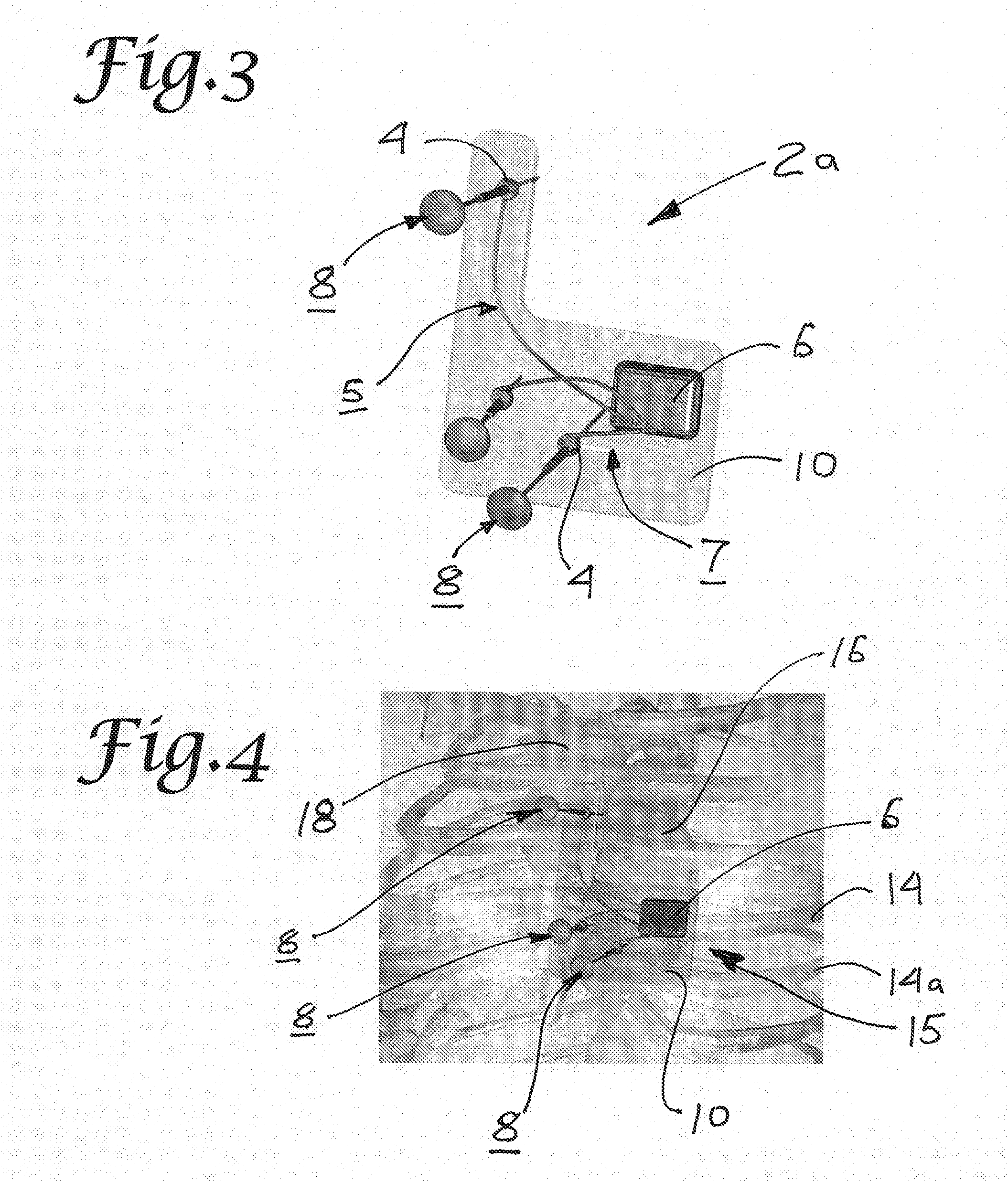Battlefield defibrillation system
a defibrillator and battlefield technology, applied in the field of battlefield defibrillators, can solve the problems of large size and weight of the corresponding defibrillator, unsuitable for first-response situations, and small implantable defibrillators, and achieve satisfactory defibrillation results, high energy output, and large size and weight of the corresponding defibrillators
- Summary
- Abstract
- Description
- Claims
- Application Information
AI Technical Summary
Benefits of technology
Problems solved by technology
Method used
Image
Examples
Embodiment Construction
[0046]In the foregoing description like components are referenced by the like numerals.
[0047]The preferred embodiment 2 of the defibrillator system is shown on FIG. 1. Defibrillator 6 is preferably releasably attached to the reference template 10 containing landmark registration elements 4. Direct cardiac access electrode assemblies 8 interface with registration elements 4 to ensure proper positioning and direction of the electrodes with respect to the patient's heart. Reference template 10 further contains apertures 5 and 7 to enable adjustment of registration elements' 4 positions in response to the differences in patients' anatomies. Electrode assemblies 8 are electrically connected to defibrillator 6.
[0048]As shown on FIG. 5, each direct cardiac access electrode assembly 8 comprises a long conductive needle 26 terminating in a sharp tip, which is covered in its entirety, except for the exposed tip, by electrically insulating layer 24. On the opposite of its sharp tip end, the ne...
PUM
 Login to View More
Login to View More Abstract
Description
Claims
Application Information
 Login to View More
Login to View More - R&D
- Intellectual Property
- Life Sciences
- Materials
- Tech Scout
- Unparalleled Data Quality
- Higher Quality Content
- 60% Fewer Hallucinations
Browse by: Latest US Patents, China's latest patents, Technical Efficacy Thesaurus, Application Domain, Technology Topic, Popular Technical Reports.
© 2025 PatSnap. All rights reserved.Legal|Privacy policy|Modern Slavery Act Transparency Statement|Sitemap|About US| Contact US: help@patsnap.com



